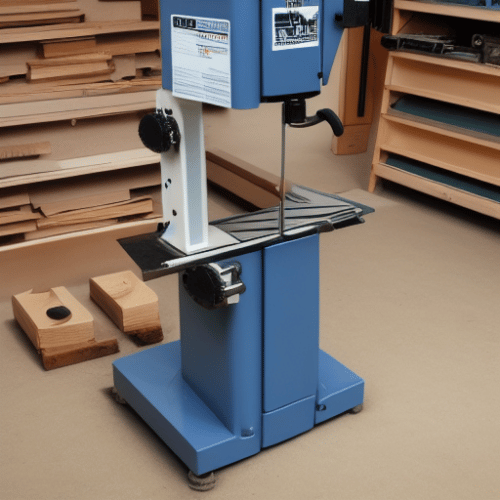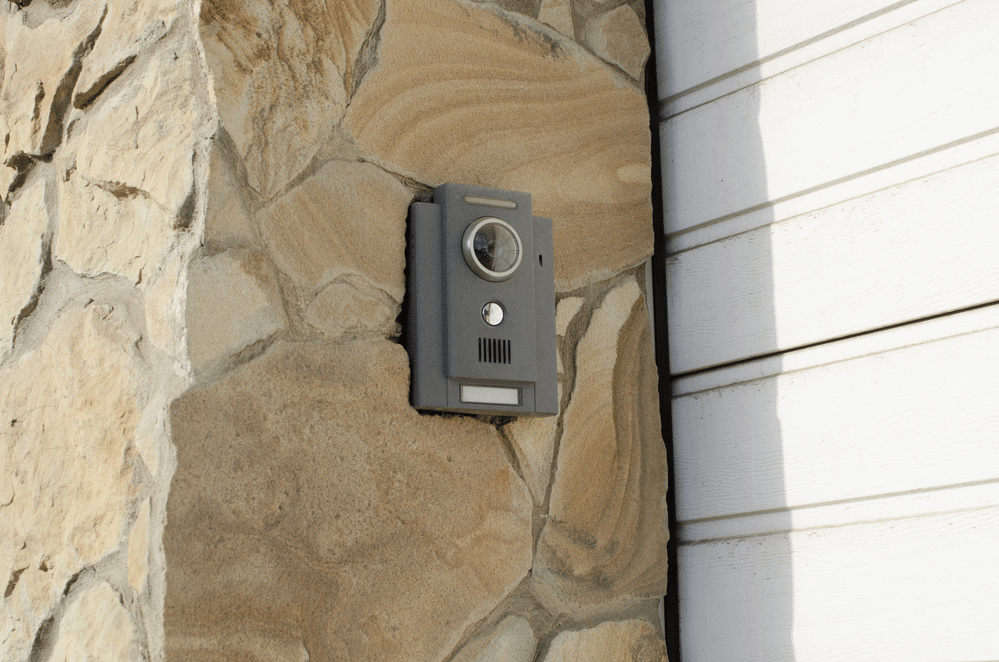Last Updated on
A bandsaw is a versatile cutting device that can be used to make detailed and curved cuts in various materials, including wood, metal, and plastic. In this article, we not only answer the question “what is a band saw?” but we also provide a host of useful information, including their design, components, and tips for safe usage.
A Brief History of the Band Saw
Did you know that the concept of bandsaws has been around since the early 1800s? Originally, the design was suggested and patented by British engineer William Newbury in 1809. However, little development was made in the technology. It is because there were few means to manufacture durable blades at the time.
As technology progressed during the 1800s, new welding methods were created. It allowed for the production of durable tooth blades that could be used in bandsaws. From there, various companies created patents for bandsaws, with a notable example being Paul Prybil, who developed the first bandsaw for commercial production and resale.
The first bandsaw models were quite large and used huge metal wheels to turn the blade. They were relatively ineffective and only suitable for use in large factories/workshops. The technology has been refined in modern times, and you can buy much smaller bandsaws for home usage in your garage or DIY workshop.
Band Saw: Components and Design
A bandsaw is a power saw that has a long blade with widely spaced teeth. The blade is in a vertical position, and it is secured in place by two wheels. The two wheels are connected to a motor that rapidly turns the wheels. This, in turn, causes the bandsaw blade to rotate. This fast rotation provides the cutting force.

The wheels and blade of the bandsaw are encased for protection. On the top side of the bottom wheel, the bandsaw has a benchtop or cutting plate. The blade passes through a groove in the plate and back into the casing surrounding the bottom side of the top wheel.
The gap between the wheels and the plate is where the cutting happens. You simply power the rotating blade and push the wood or metal onto it to use this machine. You can then guide it along a marked line to create a cut in the material.
Band saws are mainly used for woodcutting. Often this machine is used for lumber, timber, or detailed woodworking projects. However, a bandsaw can also be used with thin metals like sheet metal and tubing, or even plastic.
The benefit of using a band saw is that it offers a high degree of accuracy. Instead of holding the saw, you hold the material. You can then guide the wood and turn it to make curves and cuts with unusual, irregular angles.
Saw Type
First, we can look at the broad types of bandsaw available. You can generally buy two types of bandsaw – commercial and personal.
Commercial bandsaws are usually much larger and are a similar size to a vending machine, for example. These take up much more space and are not suitable for home usage. You will typically find these larger machines in woodworking shops and factories.
Alternatively, a personal bandsaw has a much smaller design. Typically, these devices can fit on a benchtop. They may also be called a table saw. As a result, they may have small blade teeth, a smaller motor, and less cutting power. However, due to their smaller size, they are fantastic for home usage.
Feed Mechanism
The feed mechanism aids in the cutting process and helps apply pressure to the materials to be cut effectively. The common types of feed mechanisms are a gravity feed, a hydraulic feed, or a screw feed.
With a gravity feed, the blade effectively falls using its weight. Alternatively, a hydraulic feed uses hydraulic pistons to force the blade through the material. Finally, a screw feed uses a lead screw to move the blade.
Blade Types
You can get many types of blades for a bandsaw. For example, you can get blades that are better suited for metal cutting or blades that excel at woodworking. It is essential to understand the different blade types. If you use a woodworking blade for cutting metal, for example, it could break the blade.
Important factors of blades include the teeth per inch, the material of the blade, and the common categorization of the blade. For example, you can get precision blades that are better for intricate woodworking patterns. Alternatively, you can get buttress blades that excel in cutting thicker materials and more load.
Important Band Saw Information
As you can see, a bandsaw is a relatively simple machine when you understand its components. However, there are other considerations to understand; for example, it is essential to know what materials these benchtop tools can cut and how to use them properly. This is what we look at in the sections below.
What Materials Can Band Saws Cut?
It is essential to understand the limitations of a bandsaw and what materials it can cut. The most common materials used with bandsaws are wood, metal, and plastic. What items your bandsaw can cut will depend on the models, power, and blades, however. Not all bandsaws are suitable for cutting metal, for example.
For wood, bandsaws are versatile. They can cut various sizes and types of wood, including ripping lumber and even thicker pieces of wood. For metal, bandsaws are generally used to cut thin metals such as sheet metal and tube metal. The blades are not capable of cutting solid pieces of thick metal.
What Thickness Can Band Saws Cut?
You should also be aware of the maximum thickness bandsaws can cut. It depends on the models, size, and blade configuration of the bandsaw.
Generally, a bandsaw can cut material as thick as the gap between the top of the saw blade and the blade guide base. On some table saws, you can also adjust the height of the blade to make thicker or thinner cuts accordingly. It is worth checking the specifications before purchasing a bandsaw to see its maximum cutting height.
How Do You Know When a Bandsaw Blade Needs Replacing?
You will notice a decline in the cut quality when your blade needs replacing. For example, it may take greater force to push the wood through the blade. Also, you may notice burn marks on the wood as the blade is requiring more force to cut.
Band Saw Usage Tips
Now that you understand the basics behind bandsaws, we can look at some basic usage tips, and band saw uses. These tips will help improve your effectiveness once you have learned the basics of bandsaws.
Always Wear the Correct PPE and Understand Safety Practices
As with any power tool, you need to know what safety measures to take. The tooth blades of bandsaws spin incredibly fast and can cause serious injury.
Therefore, we advise wearing protective safety glasses and ear defenders. Safety glasses will protect your eyes from any shards of material that fly up when cutting. Hearing protection also helps as these tools are relatively loud. You may want to wear protective gloves, too, although this can reduce your control. Also, make sure that you have read the instruction manual completely. You can then understand the safety mechanisms and any important safety features.
Use Offcut Material to Practice Straight Cuts
When first using bandsaws, it takes time to refine your technique. As a result, you may first struggle to cut straight and control the wood or metal properly. Therefore, practice! If you have any scrap pieces of wood, use them to practice your cutting technique.
Consider designating a small plastic container for your offcut pile stock. You can keep offcut pieces of wood here instead of throwing them away. They can then be used to improve your cutting skills.
Cut on the Outer Edge
It applies to cutting in general with various materials, but especially with band saws; if you have marked a cut in your timber or metal, always cut on the outer edge of the marked line.
It gives you a little extra material to work with. If you slip up slightly, you should not cut into the finished piece of material. If this makes the cut slightly larger than you want, you could sand it to give a smooth edge exactly on the line.
Start at the Shallow Edge of an Angled/Contoured Cut
If you are making angled cuts or contoured cuts, you can use a simple technique to improve the quality of the irregular cuts. By angled, we mean irregular cuts where the material is wide at one end than at the other.
When cutting lines like this, it is best practice to start at the shallower edge/angle. If you do the opposite and end at the shallow angle, the material could pop out and cause jagged edges on the cuts.
Make Relief Cuts to Make the Cutting Process Easier
Another simple but effective technique you can use is to make relief cuts. Relief cuts take the pressure away from the cutting process and give you more room to work with.
A relief cut is a cut that travels from the edge of the disposable material to your marked line. Therefore, as you cut, the relief pieces of material will fall away! You make these intersecting cuts at regular intervals perpendicular to where you need the finished cut.
Release the Blade Tension When the Bandsaw Is Not in Use
Many people make the mistake of leaving their saw blades intact and fully tensioned when the band saw is switched off. If you leave the blade fully tensioned, it can place unnecessary strain on the saw blade and reduce its longevity.
Your bandsaw will either have a quick-release tensioning system or a simple tension dial. Either release the tension using the mechanism or turn the tension dial a couple of times. It allows the blade to rest when not in use.
Maintain and Replace Dull Blades Effectively
The skip tooth blades are one of the most important aspects of band saws. Therefore, you must look after them. It is therefore essential to replace a blade as soon as it is dull. If you continue to use dull tooth blades, you will compromise the quality of your cutting. It is also a great idea to have several spare blades that you can change quickly.
Have You Decided Yet?
So, what is a band saw? It is a fantastic power tool to have in your workshop. If you enjoy woodwork or making intricate cuts, bandsaws are some of the best tools available. When used for cutting, they allow you excellent precision and can take your woodworking and DIY to the next level. You should now have a better understanding of these tools, how they work, and how best to use them.
Paul is the type of person who never met a problem he couldn’t fix. He can always be found tinkering with something in his house, even if it isn’t broken! His tips and tricks are often shared on our site. He’s the one you call when something breaks because he has been known to improvise fixes for everything from leaky faucets to malfunctioning dryers.



